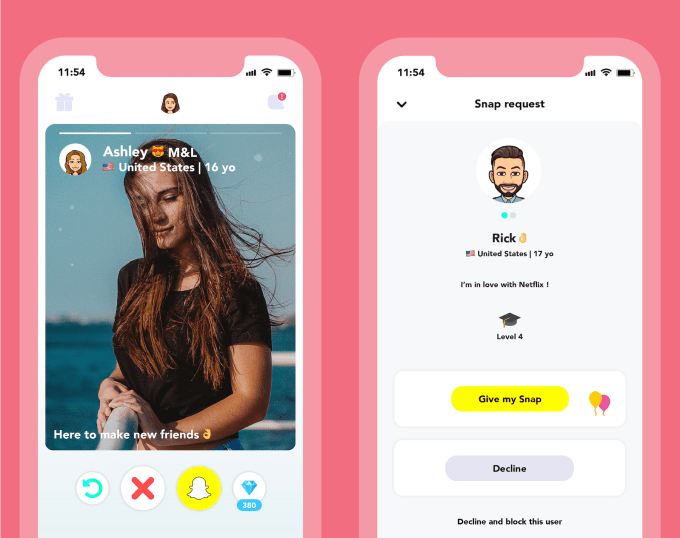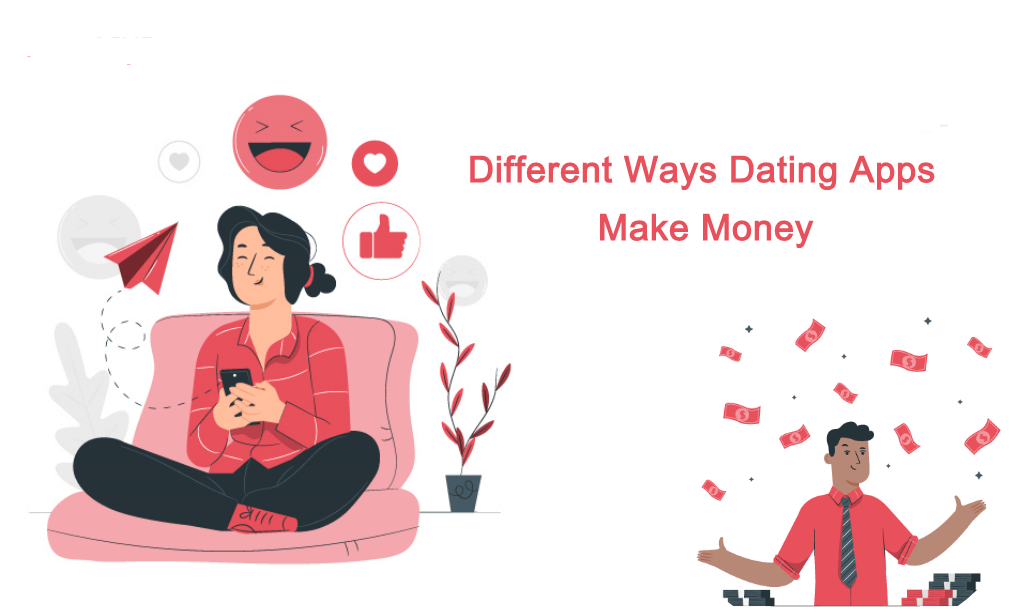Dating Apps To Make Money
6/7/2022 admin
How do dating apps make money? The Business of Business looks into the tricky, booming business of monetizing swipes.
Make money fast with one of the highest payouts per member in the online dating industry. Sign up now and earn $35 for each member, plus a $100 dollar bonus if. Swype Dating App Location-Based Dating App. Swype is a dating app available for people in Ghana, Africa. It has seamless features such as super like, and connect mutually via photos. This location-based dating app is an ideal way to bring people together. Users can set filters such as age range, location, and gender to ensure that they are.
Bumble is now an $8 billion company. Its share price soared 60% the day the dating app went public on February 10. By the time the market closed, founder and CEO Whitney Wolfe was a billionaire (the youngest self-made one in history, if you don’t count Kylie Jenner and still believe in the term “self-made”). Meanwhile, Match.com has become a $45 billion company as the operator of Tinder, Hinge, Match, OKCupid and Plenty of Fish. The firm brought in revenue of $2.4 billion in 2020 alone, with Tinder accounting for $1.4 billion of that figure. The valuation of gay dating app Grindr, now worth $620 million, has quadrupled in the last four years.
There’s no question that dating apps have become cash cows. Tinder, Bumble and Hinge recorded surges in swiping over the past year, a 12% jump in usage for the top eight dating apps combined. Tinder consistently ranks in the top 10 biggest-grossing apps each month, while Bumble broke into the top 10 several times last year. But there are still questions about how these apps actually turn swipes into cold hard cash.
'Freemium' subscription plans
How exactly does Whitney Wolfe get paid? You probably know dating app’s paid subscription plans are part of the answer, since it’s free to make a profile on nearly every dating app. Turning free users into paying subscribers is at the core of the business of dating apps. Tinder gives non-paying users around 25 swipes per day. Bumble has an unspecified daily limit that seems to be between 30-50. You get 8-10 on Hinge. The idea is that users, after exhausting their daily swipes every day for a few weeks or months, will get discouraged and shell out for premium features that boost their chances of finding a match.
Bumble has two subscription tiers: Bumble Boost which costs $7.99/week (the price drops to $8/month when you buy six months) and Bumble Premium, which will run you $17.99/week ($22/month when you buy three). Boost suggests you can “double your matches” with unlimited swipes, five “SuperSwipes,” and a weekly “Spotlight” that puts your profile at the top of the “stack” for 30 minutes. Plus, the option to rematch with expired connections (on Bumble, women only have 24 hours to message their match before it disappears), extend the 24-hour window, and backtrack on left swipes.
Bumble’s next tier, Premium sweetens the deal with “Beeline” which lets you see all users who’ve liked your profile, “Incognito mode,” which hides your profile, “Bumble Travel,” which lets you match with people outside your range, and “Advanced Filters,” which let you screen for qualities like height, politics, education and exercise habits.

Tinder spreads its features into three tiers: Plus, Gold and Premium, which cost approximately $9.99/month, $29.99/month and $39.99/month respectively. The top options throw in perks like curated “Top Picks,” and an option to “message before matching.” However, Tinder settled a $23 million lawsuit in 2019 that proved they were charging users over 30 double the standard fees for their plans. Reports suggest that Tinder’s plans’ prices can still vary based on age, location, gender and sexuality, with straight middle-aged men in cities being charged the most.
Hinge copied Tinder’s plan, promising that members of Hinge Preferred ($4.99-$9.99/month) get twice as many dates, with all the usual perks plus personalized dating advice from a Hinge expert. Grindr has Grindr Xtra ($11.99-$24.99/month) and Grindr Unlimited ($50/month or $300/year), which throw in features like “discreet app icon” and a four-digit code login for privacy. Despite comparable pricing plans, Bumble and Hinge have risen above their peers when it comes to ratings on Apple’s App Store.
Like most businesses, dating apps often rely on sweetened entry deals (“25% off your first month”) to rope people in. Conspiracy theories have floated around online for years that dating app algorithms for unpaid users deliberately cripple their dating prospects — keeping strong matches out of your stack or other devious activities — in order to push people towards paid plans.
Whether or not this is true, it begs the question: Do people really use Tinder Gold or Bumble Boost? Lately, yes. Bumble broke 2.4 million paid users in September 2020, up 20% from 2019, while Tinder now has 6.6 million paying swipers, up 15%. Tinder’s Chief Financial officer told the New York Times that 70% of Tinder’s revenue comes from subscriptions. Meanwhile, Bumble said boosted its average revenue per paying user (ARPPU) from $15 in 2019 to $18 through September 2020.
App | # of paying users | # total users |
Tinder | ||
Bumble | ||
Hinge |
In the US, Tinder controlled about 40% of the market as of 2020, Bumble, around 19% and Hinge has captured 6%. One thing’s clear, people have never been so willing to pay for swipes.
For elite apps, membership fees are the standard
Tinder and Bumble would likely never have become so widespread and popular if their generic products weren’t free. This isn’t an issue for exclusive, members-only dating apps who want to keep “regular” people out, like Raya and The Lox Club. If you can ever get off their notorious waiting lists, these apps charge base fees — like a dues to a country club or a secret society.
The Lox Club’s annual memberships cost $96, six months for $60 or $36 quarterly. Raya, where celebrities like Channing Tatum and John Mayer are known to have profiles, costs a relatively modest $8.99 for one month. The League, where you need to have ivy league degree or a prestigious resume to get accepted, is technically free, but only gives you three swipes a days unless you upgrade to a membership plan that highly incentivizes time commitment: a one month is $199.99, but it’s $99/three months, or $67/six months. The League also collects cash from people joining as “Owner” or “Investor”-level members, which run as high as $399.999/month.
One-time in-app purchases
Online dating has been so thoroughly gamified that people are also shelling out for extra ammo, weapons, lives or even full in-app currencies to help them on their journey. Many of the features that come with paid plans are also available one-time purchases. On Tinder, which makes the other 30% of its revenue from a la carte purchases, you can buy packs of SuperLikes and Tinder Boosts like speciality trading cards. SuperLikes start at $1.60, or you can snag 25 for $30 ($1.20 a pop). Boosts, which place you prominently in others’ queues (reportedly most effective between 8 and 10 PM when the masses are a-swiping), go for $6.99 each or $50 for 10.
Bumble opted for an in-app currency called Bumble Coins ($1.99 each), which can be used to purchase their premium features like SuperSwipes ($2 each) and Spotlights ($6 each). Hinge’s version of a SuperLike/SuperSwipe is a “Rose.” Everyone gets one free rose a week, or they’re available for $3.99 each. Hinge has tried to contrast itself to the gamified feel of Tinder and Bumble, but still traffics in “Boosts” which make you extra visible to other users for $9.99 a pop.

Advertising and brand partnerships

Currently, advertising — the backbone of Instagram and Snapchat — is a tiny piece of the business of dating apps. 3%, to be exact, when it comes to Bumble’s revenue. While “No ads” is a Tinder Gold feature, the company told the New York Times advertising accounted for just a “small amount” of their profits. Occasionally, Tinder advertises for brands, TV shows or charities (in the past, Domino’s Pizza, Amnesty International, SuitsThe Mindy Project) via sponsored profiles that people can swipe on. Despite the minimal presence of ads on Tinder and Bumble, they’re enough for Hinge to try to distinguish itself by promising it won’t offer in-app ads (they leave the door open on “brand partnerships”).
Challenges

Between paid subscriptions, memberships, in-app and ads, the dating app industry has carved out a lucrative business model and transformed our culture into one where paying for help getting a date is normalized. However, dating apps tread a delicate line. They must continually acquire new customers in order to be profitable, get users to click “purchase” in a saturated market in which most people — with a limited budget to spend on dating services — use 2 or 3 apps at a time, and give their users a positive experience on the app, where they don’t feel preyed upon or exploited. For instance, in its IPO, Bumble listed among their risks, the prospect of being “severely affected” by “negative reports or publicity” given their self-purported feminist mission as a company. All the while, making a product that’s effective but that doesn’t shuttle people off the app too quickly.
Do Dating Apps Make Money
About the Data:
Dating Sites To Make Money
Thinknum tracks companies using the information they post online, jobs, social and web traffic, product sales, and app ratings, and creates data sets that measure factors like hiring, revenue, and foot traffic. Data sets may not be fully comprehensive (they only account for what is available on the web), but they can be used to gauge performance factors like staffing and sales.